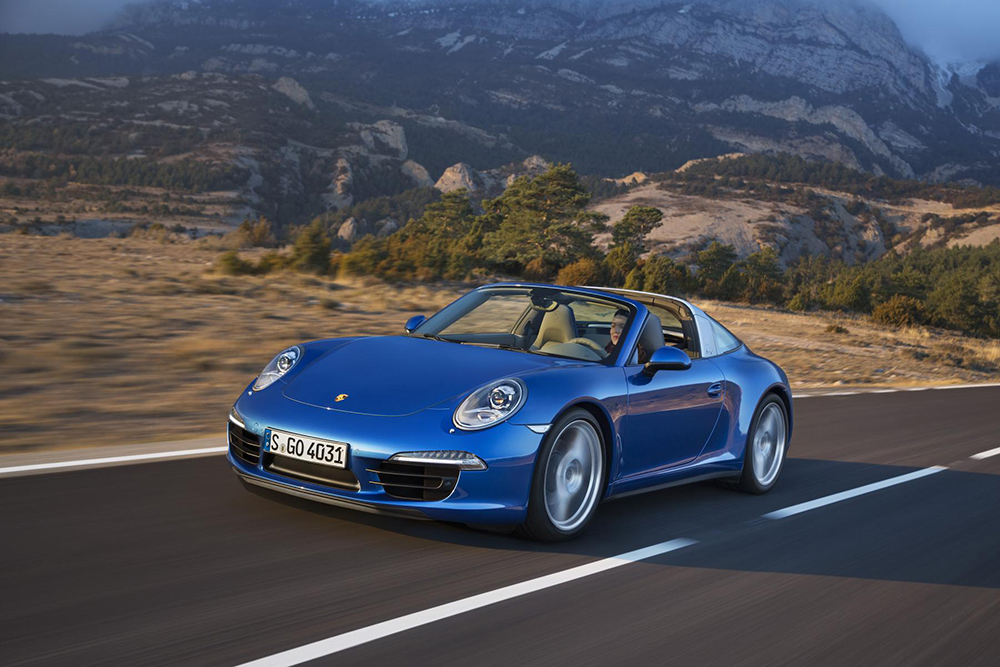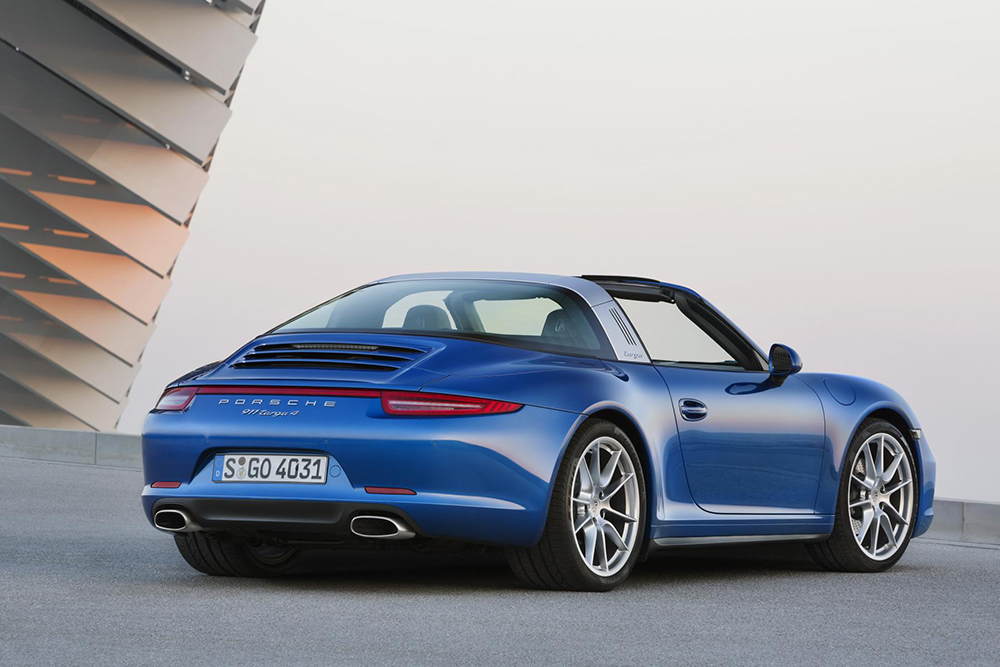Giles Smith's First Drive: Porsche 911 Targa 4S
ODD TO think, but without the much-derided “health and safety” mentality, we may never have had the Porsche 911 Targa.

ODD TO think, but without the much-derided “health and safety” mentality, we may never have had the Porsche 911 Targa. In the mid-Sixties, the American government realised that the consequence of rolling over an entirely open car was uncomfortable for all concerned and was threatening to legislate such cars off the roads. So Porsche pre-emptively developed its “Targa bar” concept — a permanent steel band straddling the car above and behind the driver’s head.
This furnished protection — but protection to which you could also attach a stowable roof and your choice of wrap-around rear window in glass or plastic, the plastic one being removable for maximum cabin exposure, and also for maximum leaky sealage problems.
And so the fun kept coming, for another 30 years, until 1996 when, partly because of those sealing problems, the Targa went into its controversial greenhouse period. Somewhat diluting the concept, the Targa bar disappeared and the car got a more practical, entirely glass roof, part of which slid open.
Search for and buy a used Porsche 911 on driving.co.uk
Some loved the light that now fell into the cabin in unhampered quantities; others felt they were driving a loft conversion.
Hence this return to its roots — an all-out, bar-toting hark back to the original 1967 911 Targa, right down to the triple gills and logos on each side. The result is a gorgeous-looking, unashamedly self-indulgent joy-bringer and a model with at least a fighting chance of succeeding in sloughing off the weighty earnestness of everything that Porsche does.
Because this is 2014, the canvas top must be peeled and stowed automatically, preferably in a feat of needlessly staggering hydraulic ingenuity. The Targa needs to be stationary during this process, and no wonder, given the extravagant cabaret of lifting and concertinaing body parts that ensues, during which the car appears to be auditioning for a part in one of the Transformers movies.
As you watch, you wonder whether the four-wheel-drive Targa is going to give up on the idea of turning into a sun-seeking convertible, and instead propel its mechanical guts into a vertical barrel roll and end up as a city-saving robo-cop, with you strapped unhappily to its sternum. Blessedly, it sticks to the task, though, the canvas top folding like a napkin into the boot and the wrap-around glass returning to seal the deal with a satisfyingly soft click.
Hence this return to its roots — an all-out, bar-toting hark back to the original 1967 911 Targa, right down to the triple gills and logos on each side.
The entire show takes 19 seconds. Then, top stowed, you are ready to blast off at mad speed into the sunshine — taking some friends, if you wish, because the Targa offers “2+2” seating. That said, the Porsche catalogue is historically one of the very few places in the world where 2+2 normally equals three, at most, and possibly only two.
In order to re-test this mathematical anomaly, I decided to insert myself into the rear passenger compartment of a Targa 4S parked on the drive of an Italian hotel — and thereby inadvertently produced a public display of contortion quite as spectacular as anything put on by the folding roof.
Essentially, I had to uncouple my collarbones on both sides and thrust my shoulders forwards and downwards while, simultaneously bringing my coccyx up and over the door sill. My upper body then moved towards the rear of the car, enabling my knees to be partially stowed downwards in the allotted gap behind the driver’s seat.

The action had taken three minutes and 47 seconds and, again, was clearly not to be attempted while the car was in motion. Also, one of my shoes was off, my legs were now crossed and I was pitched steeply to one side with my chin squashed onto my dislocated left clavicle. Thereby proving that in Porsche arithmetic 2+2 = three at most.
Top-down driving is pretty rowdy. There’s a thin, adjustable plastic deflector above the windscreen that you can raise or lower and that minimally reduces some of the bass-end thrum in your eardrums but does nothing to diminish the overall whoosh. In the battle for supremacy between wind noise and the charismatic growl of the 4S’s 3.8-litre flat-six engine (a growl that you can deepen, according to taste, via the Sport and Sport+ buttons), the wind wins hands down, which seems a pity.
Also, all that Transformers stuff adds 110kg to the weight of a standard 911. That’s 17 stone or, roughly speaking, the combined weight of all four members of the Rolling Stones.
That doesn’t make it slow, though, or cumbersome. Yes, the car might not fly quite like a conventionally roofed 911, but I took it around a succession of knuckle-whitening Italian hills and at no point did I find myself exiting corners muttering, “Come, on — keep up.”
And anyway, that’s not what it’s about, is it? It’s about the rooflessness and, above all, the Targa bar. Many thanks, health and safety.
Smith’s verdict ★★★★☆
Porsche sets the bar high
Porsche 911 Targa 4S
Search for and buy a used Porsche 911 on driving.co.uk




